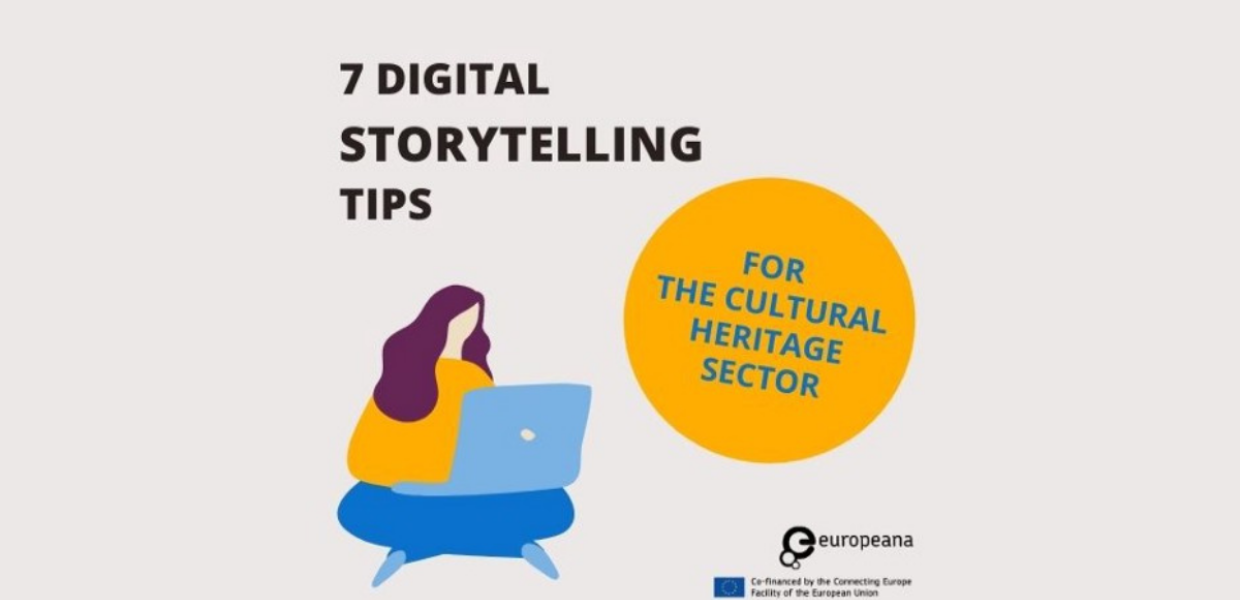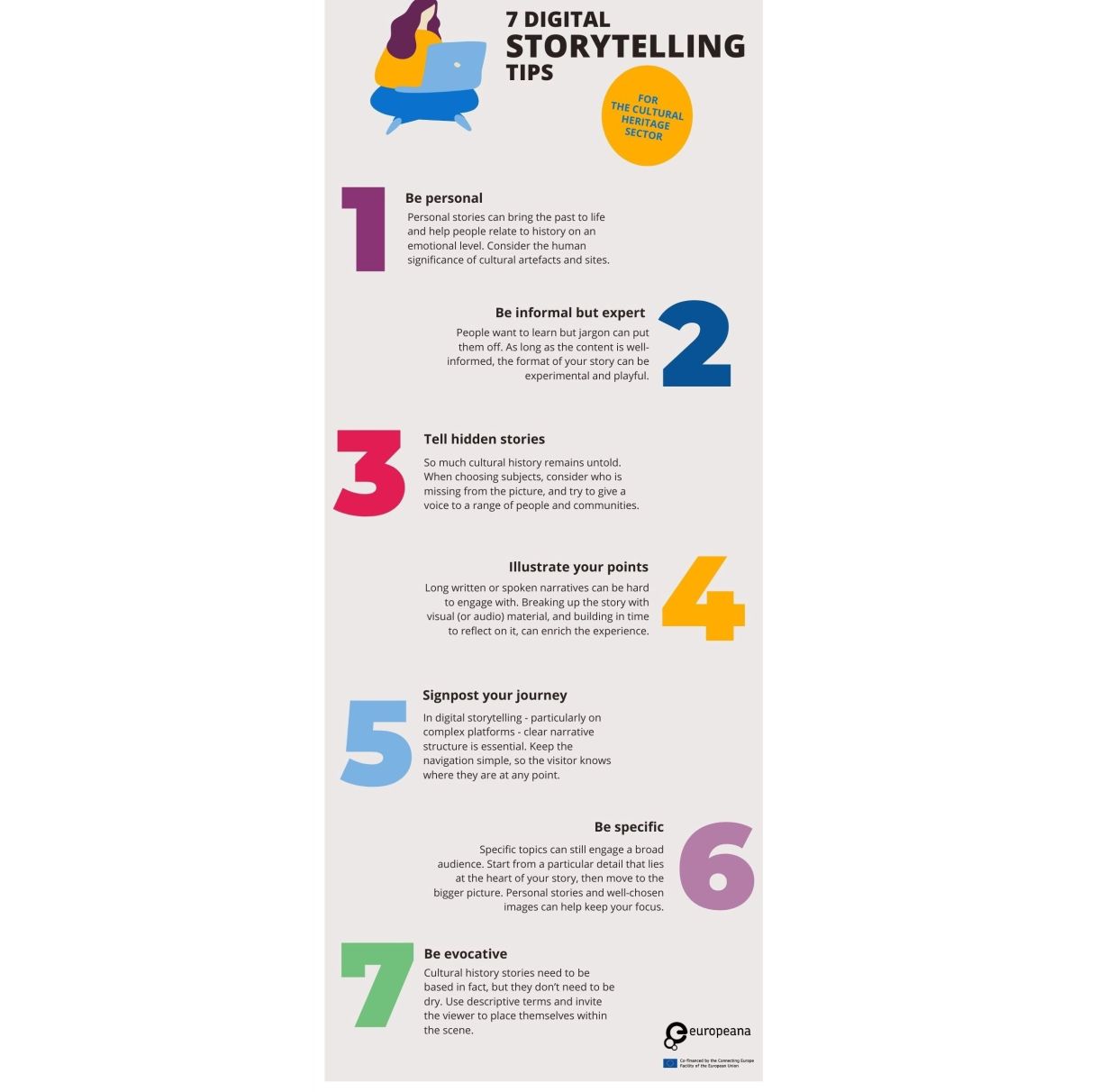7 udhëzime për të rrëfyer histori
Si i rrëfejmë ne historitë motivuese dhe më frymëzuese online ndërmjet trashëgimisë kulturore ?
Audienca dëshiron jo vetëm të informohet nga historitë digjitale, por edhe të shuajë kuriozitete, të motivohet dhe të krijojë lidhje emocionale me to. Pikërisht kjo e veçon “storytelling” nga llojet e tjera të rrëfimit duke i thënë atij një rol domethënës në ndërtimin e urave të shëndosha mes komunitetit dhe sektorit të trashëgimisë kulturore.
Këto shtate udhëzime, janë një burim i vlefshëm për profesionistët dhe institucionet e trashëgimisë kulturore për të zhvilluar kapacitetet e tyre për të bashkë ndarë suksesshëm historitë e tyre online. Ato u zhvilluan në 2012 nga Europeana Task Force on'Europeana as a powerful platform for digitals storytelling' duke u shndërruar në lëndë të parë për Europeana's Digital Storytelling Festival -watch the opening gala from 2022.
1. Jini personal - Historitë personale mund të rivitalizojnë të shkuarën dhe të ndihmojnë njerëzit ta lidhin historinë në nivel emocional. I lini hapësirë të konsiderueshme domethënies njerëzore që fshihet pas artefakteve dhe vendeve historike dhe kulturore.
2. Përdorni regjistrin e zakonshme, si të ishit një ekspert - Njerëzit duan të mësojnë, por, ndonjëherë zhargoni i step, por për aq kohë sa përmbajtja informon në nivelin e duhur, formati i rrëfimit tuaj mund të jetë eksperimentues dhe sfidues!
3. Rrëfeni (për) histori të fshehura - Pjesa më e madhe e kontekstit kulturor mbetet e pa treguar! Kur të vendosni se cilin subjekt do të trajtoni, kini parasysh atë që mungon (p.sh nga një kuadro apo tablo) dhe përpiquni t’i jepni zë sa më shumë njerëzve dhe vendeve!
4. Ilustroni pikëpamjet tuaja - Është e vështirë të ruash ritmin dhe koherencën në rrëfime të gjata gojore, kështu që mbushuni ndonjëherë me frymë dhe ilustroni (me audio, me figurë) atë që po komunikoni, duke lënë hapësirë për meditim dhe pasurim të eksperiencës.
5. Jini të identifikueshëm dhe të gjurmueshëm - Në rrëfimet digjitale, veçanërisht në platformat komplekse, është shumë e rëndësishme një strukturë rrëfimtare e qartë. Ruani gjurmimin, me qëllim që vizitorët (dëgjuesit), të kuptojnë se ku ndodhen!
6. Jini specifikë - Temat specifike mund të përfshijnë një audiencë të gjerë. Nisni me një detaj të veçantë që ju drejton në thelb të asaj që po tregoni, më pas lëvizni drejt një panorame më të gjerë. Eksperiencat personale dhe imazhet e zgjedhura me kujdes, mund t’ju ndihmojnë në ruani fokusin!
7. Jini joshës! - Rrëfimet historike kulturore lipset të mbështeten në fakte, por jo pa jetë! Përdorni terma përshkrues duke i joshur shikuesit (dëgjuesit) t’i vendosin faktet në skenat përkatëse!


